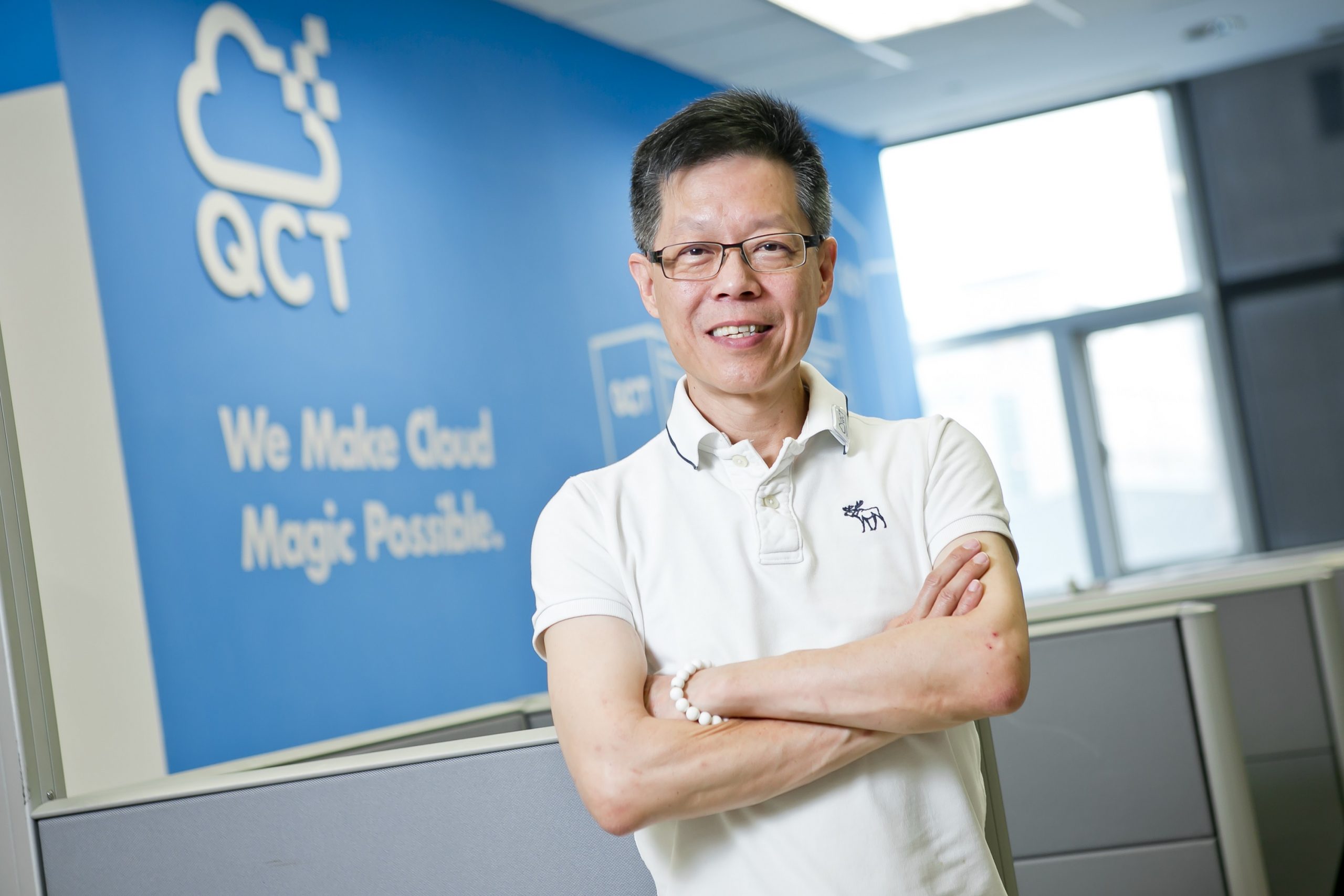SAN JOSE/DÜSSELDORF, February 26, 2020 – Quanta Cloud Technology (QCT), a global data center solution provider, supports its customers with comprehensive 5G end-to-end hardware products and solutions spanning from on-premise uCPE, edge computing, 5G NR, 5G Core, to service assurance and applications. Due to the imminent rise of 5G in 2020, QCT is mainly focusing on its “Infrastructure of the Future, Now”.
The solution portfolio encompasses not only carrier-grade and commercial level solutions, but also QCT”s achievements through collaborating with open source communities. After having showcased its disaggregated whitebox solutions, open NFVI platforms, and the 5G enabling ecosystem of partners at past Mobile World Congress events, QCT is now introducing its Next Generation Central Office 2.0 (NGCO 2.0) solution that was originally scheduled to be presented at MWC 2020 in Barcelona.
To welcome and prepare for the 5G era, QCT has planned, collaborated, and executed projects with partners and customers to overcome the complexities and challenges of the future. This includes an update to last year”s Rakuten cloud-native mobile network, an ORAN DU/CU disaggregated architecture, and ONAP machine learning based data lake project with China Mobile. As QCT believes 5G starts now and because 5G revolves around applications which require eMBB, uRLLC, or mMTC scenarios, QCT also partners with a vast community of partners that include Altiostar, Baicells, Radisys, ASTRI, and Altran to realize NFV architectures, helping telcos transform from a traditional central office to an NGCO 5G data center, accelerating new services implementation, and creating next revenue stream.
QCT”s long-time collaboration with Intel continues with the 2nd Gen Intel Xeon Scalable processor, featuring performance, built-in AI acceleration, hardened security, and solution choices from its industry-leading ecosystem. These new processors leverage high-performance compute cores with Intel”s hardware and software portfolio to propel network, cloud, 5G, AI everywhere, growth of the edge, and enterprise customers to unleash the power of data through cloudification of the network. QCT has become familiar with several Intel workload-optimized technologies across hybrid cloud, network, and analytics. QCT will soon offer Intel Select Solutions on the latest 2nd Gen Intel Xeon Scalable processor with built-in Intel Deep Learning Boost, including a NUMA-balanced, NFV-ready, DPDK-enabled NFVI Forwarding Platform (NFVI FP) that has been certified on Red Hat enterprise Linux and OpenStack Platforms.
Real World 5G Use Cases
Many digital applications are embracing 5G to bring their technology to the next level. 5G has proven to be successful in multiple everyday use cases, starting from facial recognition, ad insertion up to Cloud Gaming or Enterprise 5G:
1. Facial Recognition: Real-time facial recognition and object recognition fueled by Intel® Xeon® Scalable processors and Intel® FPGAs can automate identification in various scenarios, such as security checks, boarding reminders, and smart factories in mere milliseconds.
2. Ad-Insertion: Intelligent ad-insertion powered by the OpenVINO™ Toolkit, transforms video services from passive media streaming to interactive video experiences for efficient advertising with real time analytics, so media content is personalized for higher affinity targeted ad placements.
3. Cloud Gaming: 5G Ultra-Low latency enables cloud gaming and video streaming to react smoothly with high video quality and fast response.
4. Enterprise 5G: QCT has developed an Enterprise 5G Pod solution, which integrates 5G NR and 5G Core to fulfill all kinds of private network usage, such as those needed for a smart factory with robotics. Robotics are used to control and execute tasks more efficiently and to make the production process more optimized.
5. Cloud Native with End-to-End Connectivity: QCT”s Computex awarded NGCO solution will return with an advanced version, NGCO 2.0. To address the transformation from 4G LTE to 5G, and the demand for container technology implementation, QCT upgraded its NGCO, Virtual Machine (VM) based RedHat OpenStack infrastructure, to a container based OpenShift platform for Container Network Function (CNF) workloads optimized on the latest Intel Xeon Scalable processors. QCT also designed Apache Traffic Control CDN to verify its NGCO rack usability and container based NFVI.
Success Case:
Together with industry leading partners, QCT has worked with Rakuten Mobile on the design and construction of its mobile network infrastructure, which has moved to its Edge Pod and Micro Pod second phase edge computing cycle based upon the different requirements of Rakuten”s central data center and edge data center. Going beyond the hardware level, QCT also developed its own in-house software “Quanta Service Tool” to help simplify infrastructure software updates, and designed a service program to complete the rack-level solution integration and validation at the QCT factory.
Supporting Quotes:
“QCT is committed to creating actionable technologies that enable companies to modernize their data centers and infrastructures to reap the benefits of real-time speeds brought forth by 5G,” said Mike Yang, President of QCT. “Leveraging our advanced platforms optimized for 5G technology and our ecosystem of partners, we have been able to create new end-to-end solutions to help businesses.”
“Extending cloud technologies to 5G and the edge represents the next phase of network transformation,” said Alex Quach, VP of Intel”s Wireless Core and Networking Division. “Strong ecosystem collaboration with partners like QCT, 2nd Gen Intel Xeon Scalable processors and open source software such as OpenNESS are making edge computing a reality for today”s business customers.”
“With the support of our industry-leading global partners, including QCT, Rakuten Mobile is changing the way mobile networks are designed and operated,” said Tareq Amin, Chief Technology Officer of Rakuten Mobile, Inc. “QCT”s experience in designing and customizing cloud-native infrastructure and expertise in integration and service have helped us achieve this successful network transformation.”




